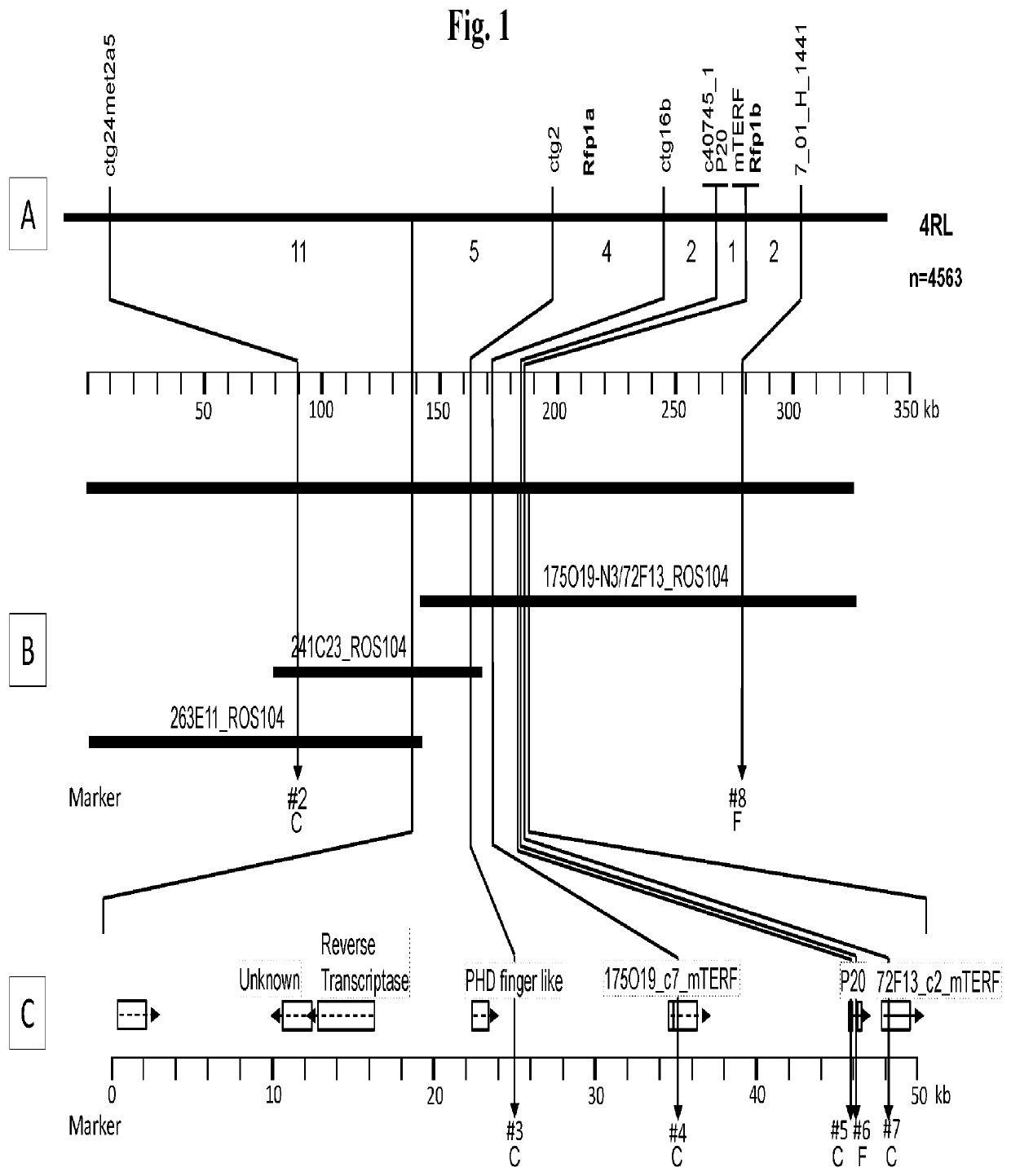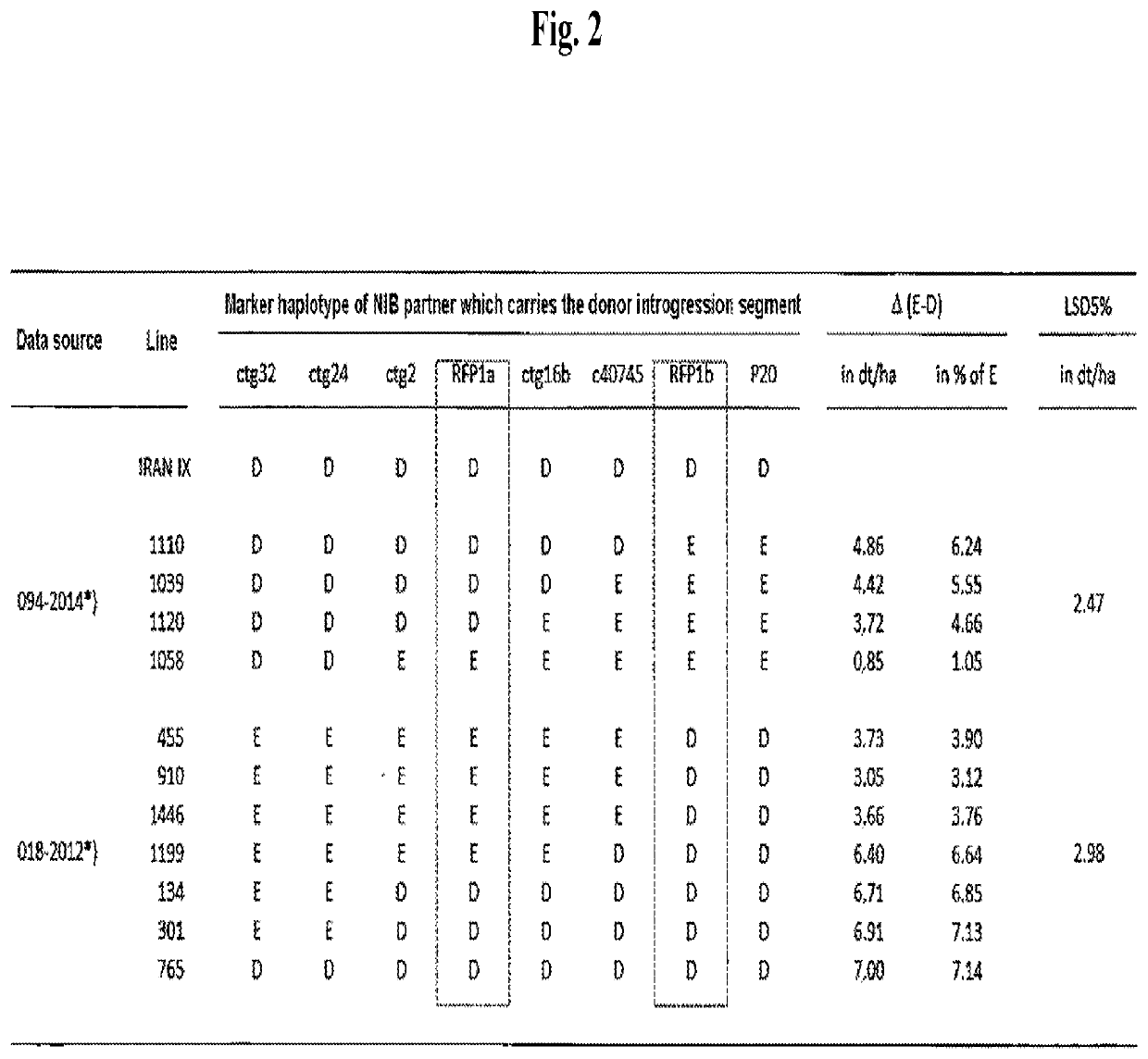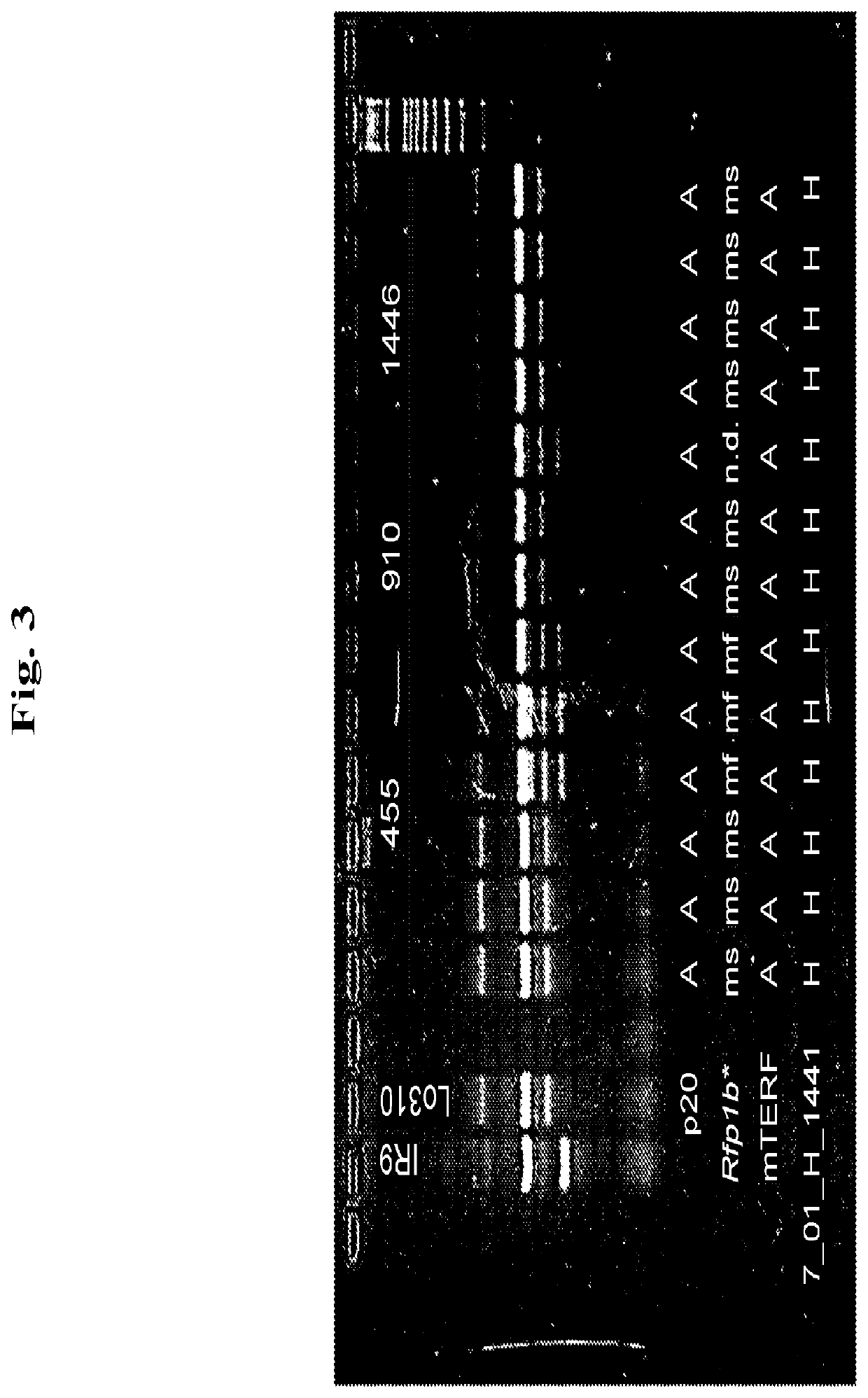Restorer plants
a plant and gene technology, applied in the field of restorer plants, can solve the problems of destroying the advantage of the heterosis effect in hybrids, and reducing the agronomic performance of today's breeding populations
- Summary
- Abstract
- Description
- Claims
- Application Information
AI Technical Summary
Benefits of technology
Problems solved by technology
Method used
Image
Examples
example 1
“Near Isogenic Bulk”—Development of Rye Line 455 in Lo310 Background
[0108]As can be seen in FIG. 5, for all recombinant genotypes, NIB D and E partners were produced in which bulks each of more than 100 BC6S1 plants, which were homozygous carriers or non-carriers of the Rfp1, were outcrossed with the single cross CMS tester T911. Boundary isolation walls ensured that no foreign pollination occurred. The test crossing seed produced in this manner was then used in field trials in multiple environments. Test crossing plants were verified for the correct pedigree by (i) subsequent marker analysis and (ii) evaluation of the pollen shedding in the field trials. All of the evaluated test crossing plants which were generated from the NIB D partners exhibited full pollen shedding, while those which originated from the E partners exhibited a very significantly reduced and only partially restored male fertility.
example 2
als
[0109]The yield evaluation trials were carried out at locations with different environmental conditions. Thus, for example, in 2012, there were seven locations in Germany (D) and Poland (PL). As can be seen in Table 1, the locations were selected so that they represented agricultural conditions in Central Europe with, additionally, different stress conditions (drought stress and nitrogen deficiency). In the low nitrogen regime, nitrogen was applied in quantities which were substantially below the usual doses. In an unwatered trial, natural precipitation constituted the only source of water, while in the watered trials, an additional quantity of water of approximately 25 mm per week was applied. In this manner, it was possible to measure effects of the Rfp1 introgression segments in very different environments. The results were then used (1) to determine the introgression segment-specific linkage drag effect, (2) to identify introgression segments with high environmental stability...
example 3
ation of Recombinant Genotypes
[0114]In order to identify recombinant genotypes and in order to describe the respective remaining introgression segments, the following markers were used: ctg24, ctg32, ctg16b, P20, c40745, wherein the marker P20 played the most significant role in all of the subsequent studies. From a publicly available rye BAC library developed from cv. Blanco, which is not a carrier of the Rfp1 gene (Shi B J, et al. (2009): Physical analysis of the complex rye (Secale cereale L.) Alt4 aluminium (aluminum) tolerance locus using a whole-genome BAC library of rye cv. Blanco. Theor Appl Genet. 119(4):695-704), and with the aid of marker P20, BACs could be identified as a source for further marker sequences. It was possible to isolate and sequence a highly promising BAC. This opened up the possibility of providing a BAC library of restorer gene-carrying genotypes (denoted here as “IR9” or ROS104), which can be viewed with specific DNA probes using PCR. Although no Rfp1 l...
PUM
| Property | Measurement | Unit |
|---|---|---|
| pH | aaaaa | aaaaa |
| pH | aaaaa | aaaaa |
| pH | aaaaa | aaaaa |
Abstract
Description
Claims
Application Information
 Login to View More
Login to View More - R&D
- Intellectual Property
- Life Sciences
- Materials
- Tech Scout
- Unparalleled Data Quality
- Higher Quality Content
- 60% Fewer Hallucinations
Browse by: Latest US Patents, China's latest patents, Technical Efficacy Thesaurus, Application Domain, Technology Topic, Popular Technical Reports.
© 2025 PatSnap. All rights reserved.Legal|Privacy policy|Modern Slavery Act Transparency Statement|Sitemap|About US| Contact US: help@patsnap.com



